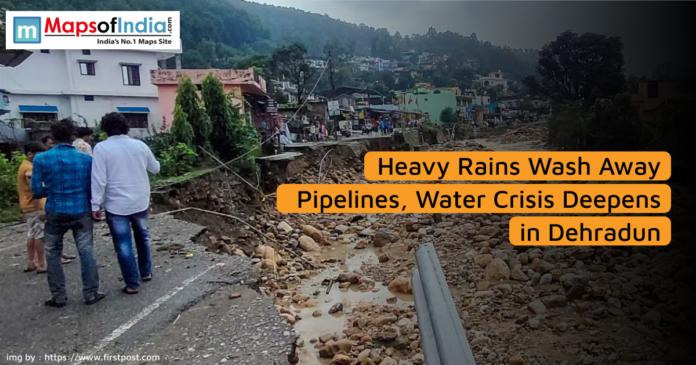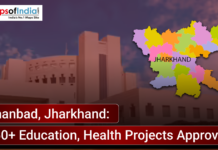Rains and the cloudburst in Dehradun and surrounding localities have left mass destruction behind, which has left thousands of people in Dehradun struggling with a heavy water crisis. The disaster eroded great drinking water pipes, affecting the supply to multiple locations in the city and other surrounding areas. The officials have stated that over 35,000 individuals were directly affected, and they are greatly struggling to take a drop of clean water as their daily lives hit a standstill.
This flash flood and landslides destroyed houses, stores, and governmental hospitals because of the sudden downpour. Some of the hardest hit industries include the water supply systems, which supply drinking water to the city. The main supply pipelines were broken or washed away in the flood, disrupting supply to residential colonies, commercial areas and even government offices. Water scarcity has become one of the largest problems in the post-disaster period, with the normal distribution having ceased.
The inhabitants of the area have been compelled to use the tankers, hand pumps, or natural waters to get their basic needs. Nevertheless, these solutions are no longer satisfactory due to the magnitude of the demand. There are long queues in tankers and community water points, which are being witnessed, as families struggle to get a sufficient supply of water to cook, drink and wash. The desperate state of things is that people are walking many kilometres to get water in certain neighbourhoods.
The administration has used other tankers to alleviate the crisis; however, broken roads and blocked routes are complicating the accessibility of remote locations. The authorities have confirmed that they have started repairing the damaged pipes, but the extent of the damage implies that it could take a number of days to restore normalcy in supply. Examples of electricity cuts and debris along the pipelines are also slowing down the process of restoration.
Another issue that has been brought by the water shortage is the issue of hygiene and health. Access to clean water is likely to increase the likelihood of water-borne illnesses and other sanitation-related problems. Relief agencies are asking people to boil water, then use it and save as much as possible until the supply is restored to normal.
Although the short-term rescue operations are in progress, the catastrophe has again demonstrated the weakness of the infrastructure in Dehradun to severe weather conditions. To avoid such a crisis in future, experts have emphasized the need to have a stronger disaster management program, resilient urban planning and a sustainable water supply system. At this point, the main focus is to reinstate the necessary services and provide the affected population with sufficient support so that they can come out of the sufferings brought about by this catastrophe.










